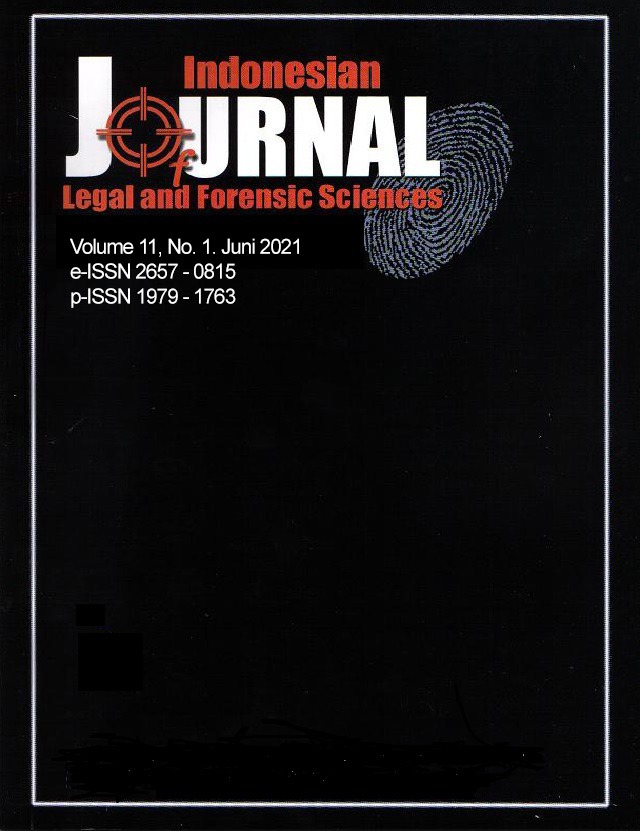KORELASI PANJANG TULANG EKSTREMITAS DENGAN TINGGI BADAN DALAM IDENTIFIKASI FORENSIK
LITERATURE REVIEW
Abstract
The measurement of extremity bones length in forensic identification can be used to determine the personal identity, one of which is the stature. Several studies have been conducted to generate predictive regression formula, yet, each formula resulted different number of one’s stature including various methods of its measurement. This research aims to analyze the correlation between extremity bones length with stature, measurement methods, final result deviation, and which part of extremity bones has the strongest correlations. The articles were searched and collected from Google scholar and Sciencedirect.com by entering “extremity bone length and stature” as the keywords in which 25 qualified articles were reviewed based on the inclusion criteria under this research. In terms of upper extremity, 10 of 17 articles revealed a correlation between forearm/radius and ulna bone with the stature (58.8%), 5 articles in upper arm/humerus bone (29,4%), and 2 articles in hand length (11,8). Meanwhile, in lower extremity, 4 of 9 articles showed a strong correlation between tibia and fibula bone with stature (44,5%), 3 articles in femur bone (33,3%), and 2 articles in foot length (22,2%). Based on the measurement methods, 24 articles (96%) used percutaneus measurement, and only 1 article (4%) used post-mortem computed tomography (PMCT). This research concluded that all the components of extremity bones length have a significant correlation with stature, although its correlation is various. The best method is percutaneus measurement to avoid the potential bias occurred in imaging method.
Downloads
References
2. Badan Pusat Statistik. Statistik Kriminal Tahun 2018. 2019. 37-39 p.
3. Badan Pusat Statistik. Provinsi Kalimantan Tengah Dalam Angka Tahun 2018. 2019.
4. Hoediyanto HA. Buku Ajar Ilmu Kedokteran Forensik dan Medikolegal. Surabaya: Departemen Ilmu Kedokteran Forensik dan Medikolegal Fakultas Kedokteran Universitas Airlangga. 2012.
5. Devison RJ. Penentuan Tinggi Badan Berdasarkan Panjang Lengan Bawah. Medan: Fakultas Kedokteran Universitas Sumatera Utara. 2009.
6. Budiyanto, dkk. Ilmu kedokteran Forensik Fakultas kedokteran Universitas Indonesia Edisi Kedua. Jakarta: Binarupa Aksara. 2007: 1,197-202.
7. Maulina Nora, dkk. Estimasi Tinggi Badan Berdasarkan Tulang Femur Perkutan Pada Mahasiswa Suku Aceh Universitas Malikussaleh. Banda Aceh: Fakultas Kedokteran Universitas Malikussaleh. 2015.
8. Putri INW. Korelasi Panjang Tulang Jari Telunjuk Tangan (Digiti II) Terhadap Tinggi Badan Pria Dewasa Suku Bali dan Suku Batak di Kecamatan Tanjung Senang Bandar Lampung [Skripsi]. Lampung: Fakultas Kedokteran Universitas Lampung. 2017.
9. Borkar MP. Estimation of height from the length of humerus in western region of Maharashtra. International Journal of Research in Medical Sciences. 2014; 2 (2).
10. Pal DC, Datta AK. Estimation of stature from radius length in living adult Bengali males. Indian Journal of Basic and Applied Medical Research. 2014; 3 (2).



















